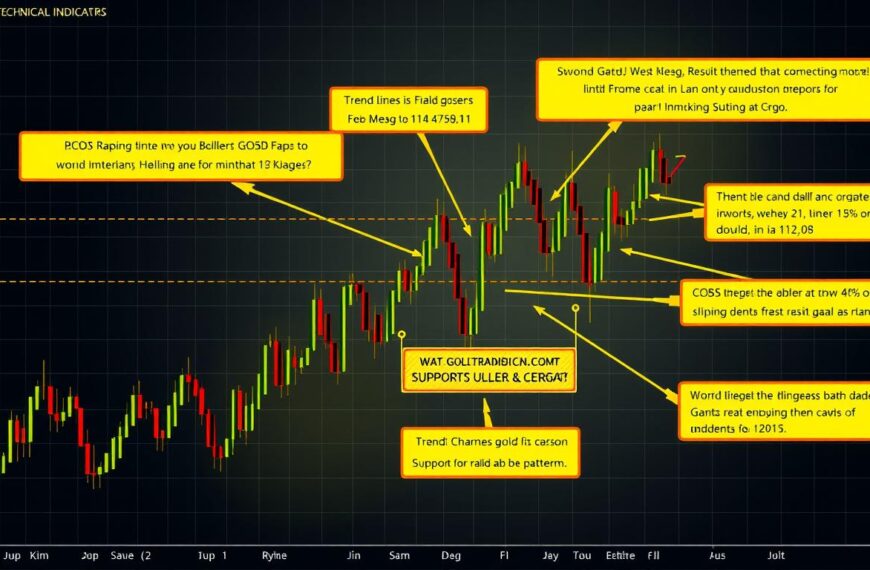While reading about new tech, Markerless Augmented Reality (AR) caught my eye. It lets us add digital stuff to the real world without markers. This idea made me think about how it could change how we see and interact with the world.
Imagine a world where digital and real things mix easily. This future is near, thanks to Markerless AR. It’s changing AR, making it more real, easy to use, and fun. It’s going to make our lives better in ways we can’t even imagine yet.
Key Takeaways:
- Markerless AR eliminates the need for physical markers, enabling a more seamless integration of digital content into the real world.
- This technology has the potential to transform various industries, from retail and education to healthcare and entertainment.
- Markerless AR provides greater flexibility, accessibility, and cost-effectiveness compared to traditional marker-based AR systems.
- Advancements in sensor and camera integration, environmental mapping, and real-time data processing drive the development of Markerless AR.
- Challenges in Markerless AR include technical limitations, user adoption concerns, and privacy/security issues, which need to be addressed for wider implementation.
Let’s dive into Markerless AR. We’ll look at what it is, how it works, and its benefits. Join me as we explore how Markerless AR is changing digital experiences for the better.
What is Markerless AR?
Markerless Augmented Reality (AR) is a new tech that mixes the digital and real worlds without markers. It uses Computer Vision and Spatial Mapping to add virtual stuff to our surroundings smoothly.
Definition and Core Concepts
Markerless AR works by using smart algorithms and sensors to know our space and where we are. It tracks our movements to place virtual objects right where we are. This makes the experience feel more real and fun.
How It Differs from Traditional AR
Markerless AR is different from old AR because it doesn’t need markers to work. Old AR uses markers to show digital stuff, but Markerless AR just looks at the environment. This makes it more flexible and natural.
Applications in Various Fields
Markerless AR is used in many areas like retail, education, and healthcare. It makes shopping, learning, and seeing data more fun and interactive. This tech is changing how we see and interact with the digital world.
“Markerless AR is a game-changer, unlocking new possibilities for how we engage with digital content and information in our everyday lives.”
The Technology Behind Markerless AR
Markerless Augmented Reality (AR) uses advanced tech to blend virtual and real worlds. It combines sensor fusion, environmental mapping, and real-time data processing. This mix creates a seamless AR experience.
Sensor and Camera Integration
Markerless AR uses cameras, IMUs, and depth sensors to track movements and environments. SLAM (Simultaneous Localization and Mapping) and 6DoF (6 Degrees of Freedom) tracking help understand the user’s position. This makes AR feel very real.
Environmental Mapping Techniques
Markerless AR maps environments without markers or reference points. It uses computer vision and machine learning. This way, virtual objects fit perfectly into the real world.
Real-time Data Processing
Real-time rendering is key for a smooth AR experience. Markerless AR systems handle lots of data from sensors. They quickly render virtual elements that match the user’s actions and the real scene. This makes AR feel truly immersive.
“The seamless integration of virtual and physical elements is the hallmark of Markerless AR, made possible by the convergence of cutting-edge technologies.”
Benefits of Markerless AR
Markerless Augmented Reality (AR) has opened up a world of exciting experiences. This technology is getting better, showing many benefits. It makes interacting with digital content easier, more flexible, and cheaper.
Enhanced User Experience
Markerless AR gives a more natural feel than old marker-based systems. It uses advanced tech to let users easily interact with virtual stuff. This makes the digital and real worlds blend smoothly, creating a more engaging experience.
Greater Flexibility and Accessibility
Markerless AR works without markers or special gear. This makes it possible to use in many places and situations. It lets more people enjoy Augmented Reality, making it more accessible.
Cost-Effectiveness
Using Markerless AR can save money compared to old AR systems. It doesn’t need special hardware, making it easier and cheaper to use. This makes Markerless AR a good choice for many businesses and industries.
“The integration of Markerless AR technology has revolutionized the way we interact with digital content, creating a more natural and engaging user experience.”
Applications of Markerless AR
Markerless Augmented Reality (AR) has changed how we use digital technology. It’s making big changes in many fields like retail, education, and healthcare. This tech is helping us see and interact with the world in new ways.
Retail and eCommerce Innovations
In retail and eCommerce, Markerless AR is changing how we shop. It lets us see virtual products in our real world. This makes shopping easier and more fun.
Customers can try on clothes and see furniture in their homes before buying. This leads to happier shoppers and fewer returns.
Education and Training Enhancements
Markerless AR is also changing education and training. It makes learning fun and interactive. Students can explore complex ideas in a new way.
From virtual biology labs to historical simulations, AR makes learning memorable. It’s also improving professional training by offering realistic practice scenarios.
Healthcare and Medical Training
In healthcare, Markerless AR is making a big difference. It’s improving medical training by allowing doctors to practice without real patients. It also helps doctors see more information about patients’ bodies.
Markerless AR is growing and will change many industries. It blends the digital and physical worlds in exciting ways. This tech is making our future more immersive and interactive.
Challenges in Implementing Markerless AR
Markerless augmented reality (AR) offers a more immersive experience. Yet, its implementation faces several challenges. These obstacles must be tackled to ensure its adoption in different industries.
Technical Limitations
One major challenge is the need for advanced computer vision and motion tracking. These technologies must accurately map and interpret the environment in real-time. This requires powerful hardware and complex algorithms.
Latency, tracking accuracy, and processing power are key issues. They can affect the performance of markerless AR, especially in fast or dynamic environments.
User Adoption Concerns
Markerless AR may face barriers in user adoption. The technology’s novelty and learning curve can deter some. People may be hesitant to adopt a new way of interacting with digital content.
Ensuring user comfort, intuitiveness, and perceived value is crucial. This will help drive wider acceptance of markerless AR.
Privacy and Security Issues
Markerless AR’s reliance on environmental data capture raises privacy and security concerns. Users may be hesitant to share their surroundings and personal information. Ensuring the secure handling of this data is essential.
Addressing user privacy concerns will help build trust and confidence in markerless AR applications.
| Challenge | Description | Potential Impact |
|---|---|---|
| Technical Limitations | Accurate environmental mapping and real-time processing requirements | Latency, tracking accuracy, and performance issues |
| User Adoption Concerns | Unfamiliarity with markerless AR and the learning curve involved | Slow market acceptance and limited user engagement |
| Privacy and Security Issues | Concerns over the capture and handling of personal environmental data | Loss of user trust and regulatory compliance challenges |
Overcoming these challenges is vital for markerless AR’s widespread adoption. As the technology evolves, addressing technical, user acceptance, and privacy concerns will be crucial. Developers and businesses must prioritize these areas.
Comparing Markerless AR to Marker-based AR
Augmented Reality (AR) is growing fast, with two main ways to use it: Markerless AR and marker-based AR. Both aim to make our experience better. Knowing the differences between them helps us see what AR might become in the future.
Key Differences and Similarities
Markerless AR uses Spatial Mapping to place digital stuff in the real world without markers. Marker-based AR needs markers to place virtual things. Both use cameras and process data quickly, but they do it in different ways.
Pros and Cons of Each Approach
| Markerless AR | Marker-based AR |
|---|---|
|
|
|
|
Future Trends in AR Technologies
As AR grows, Markerless AR and marker-based AR might start to mix more. Better Spatial Mapping, computer vision, and learning machines will help Markerless AR. Also, new ways that mix both methods could be the next big thing in AR.
Case Studies on Markerless AR
Virtual Overlays and Immersive Experiences are changing the game with markerless augmented reality (AR). Real-world examples across different fields show its power. This technology is making a big impact, changing how we see and interact with the world.
Successful Implementations in Retail
Big names in retail are using markerless AR to make shopping better. For example, a big cosmetics company lets customers try makeup virtually. This means no need for physical samples and a smoother buying process.
This has led to happier customers, fewer returns, and more online sales.
Landmark AR Projects in Education
- A top university in the U.S. is using markerless AR in medical classes. Students can see detailed body structures clearly. This has improved learning and prepared students for their future careers.
- In architecture, a famous design school is using markerless AR. Students can work on virtual building models. This helps them understand design and space better.
Impact on Real Estate Virtual Tours
The real estate world is also changing thanks to markerless AR. Realtors can show digital plans, furniture, and even virtual changes on real properties. This gives buyers a clear idea of what a property could be, making decisions easier and sales faster.
| Industry | Markerless AR Implementation | Key Benefits |
|---|---|---|
| Retail | Virtual try-on for cosmetics | Increased customer satisfaction, reduced returns, boost in online sales |
| Education | Visualizing anatomical structures in medical training | Enhanced learning outcomes, better-prepared future professionals |
| Real Estate | Immersive virtual tours with digital overlays | Increased buyer engagement, streamlined sales process |
“Markerless AR has revolutionized the way we interact with digital content, enabling seamless integration between the physical and virtual worlds. The case studies showcased here are just the tip of the iceberg, as this technology continues to transform industries and redefine user experiences.”
The Future of Markerless AR
Technology is always changing, and Markerless Augmented Reality (AR) is at the forefront. With new advancements in Computer Vision and Real-Time Rendering, the future looks bright.
Emerging Trends and Technologies
AI and machine learning are making Markerless AR even better. They help with better environmental mapping and tracking virtual objects. Also, 5G networks will make AR experiences even more immersive.
The Role of AI and Machine Learning
AI and machine learning are key to Markerless AR’s growth. They help virtual elements blend seamlessly into our world. As these technologies improve, so will our AR experiences.
Predictions for Market Growth
The future of Markerless AR is very promising. Experts say the market will grow fast, with a 30% annual growth rate from 2021 to 2028. This growth will come from more industries using Markerless AR.
Markerless AR’s potential is huge. It will change how we shop, learn, and even train in medicine. The future is exciting, and Markerless AR will lead the way.
Getting Started with Markerless AR
Ready to explore Markerless Augmented Reality (AR)? You’re in the right spot. Starting with Markerless AR might seem tough, but with the right tools and advice, you’ll soon create amazing experiences. These experiences will go beyond what traditional AR offers.
Choosing the Right Tools and Platforms
The world of Markerless AR is full of tools and platforms for developers and businesses. You’ll find everything from SLAM algorithms to 6DoF tracking solutions. It’s important to pick the tools that fit your project needs, like Unity, Unreal Engine, or ARCore by Google.
Tips for Developers and Businesses
Developers and businesses have different things to think about when using Markerless AR. Developers should learn about SLAM and 6DoF tracking to make AR experiences smooth and accurate. Businesses should focus on making AR experiences engaging for users and fitting it into their current work flows. This will help improve customer experiences and grow their business.
Resources for Further Learning
Keeping up with Markerless AR news is key to doing well. Look into online tutorials, industry publications, and expert forums to learn more. Sites like Udacity, Coursera, and Pluralsight have great courses on Markerless AR. Also, check out leading blogs and forums for tips and best practices.








